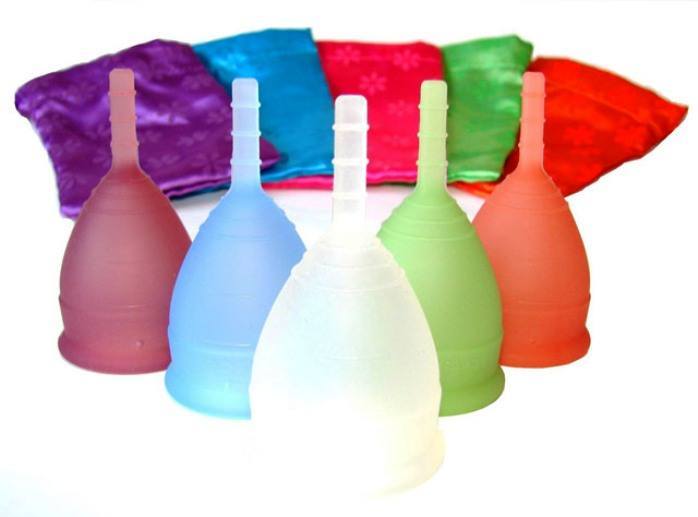As most of you — men, I'm talking to you, actually — would know, there is something that happens to women every month, for about a week at a time.
It sends us to the loo several (more than usual) times in a day, and we sometimes end up wearing dark pants, skirts or dresses to work or school (where applicable).
What I'm talking about, folks, is our monthly period. Menstruation.
Now, back to the men who are still reading this — you may have heard of pads, and perhaps a few brave souls may have even heard of tampons. And these set your gal pals/colleagues/girlfriends/wives/sisters etc back by a significant amount every year — roughly $5 for a pack of pads (that perhaps lasts for two or three months), $10 for a box of tampons (ditto), so that adds up to anywhere between $75 and $100 total.
Women now also have a third option that's set to massively save them money over the course of their lives — and also save the earth, while they're at it, since pads and tampons are tremendously pollutive — and you should completely introduce it to them.
What is this amazing thing? It almost sounds too good to be true but it exists — it's called a menstrual cup.
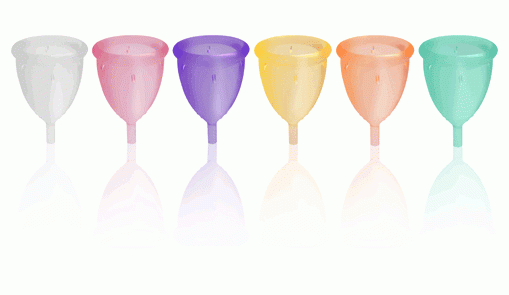 Source: aselfsufficientlife.com
Source: aselfsufficientlife.com
Then again, what is a menstrual cup?
I find it kind of crazy that despite it being invented in the 1930s, many women in Singapore have neither heard of or seen one of these in their entire lives, and so I'm going to try to change that now.
A menstrual cup is made of medical-grade silicone. It's soft and flexible, and can be bent and squeezed:
 Source: maismagenta.com.br
Source: maismagenta.com.br
To be fair, the first ones made were pretty hard, and difficult to put in, and women ended up turning to what was in their minds "more sanitary" pads, and tampons.
Now that more and more women are starting to use these, though, they now come in more and more designs and colours (that aren't restricted to these, by the way):
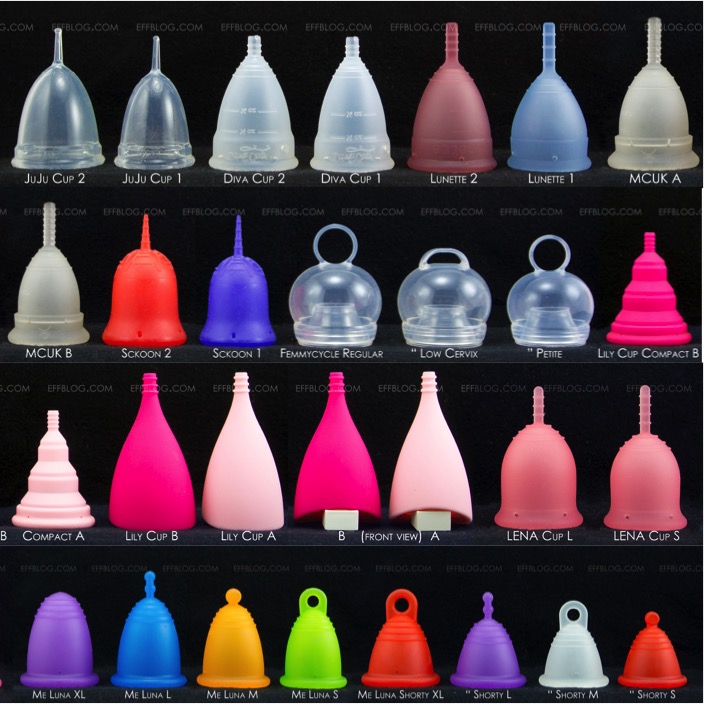 Source: The Eco-friendly Family
Source: The Eco-friendly Family
What you do with it is you fold it, and insert it into your vagina (the second hole from the front, ladies) where it will sit and collect your menstrual fluid (yep, the blood), and when it's convenient for you, you pull it out and empty it, wash it thoroughly with soap, and put it back in again.
There's plenty of information about these cups online — how to use them, the different brands and sizes available, and the benefits of using them — and this, by the way, is where I will say Singapore is severely lagging behind many other countries, especially the West.
When I thought about trying out a menstrual cup, I realised there was almost zero Singapore-specific information about it — apart from a few blog reviews, including three by our contributor Jaclynn Seah (read the second and third reviews here). I found this one quite comprehensive too.
Since I write for a website, I thought it might be useful for me to share what I now know about these for anyone who might be interested and looking for information about menstrual cups here in Singapore.
Here are four things I've learned from research, personal trials and talking about it with girls who have tried it:
1. I would chiefly recommend this for women who have previously worn and are comfortable with tampons.
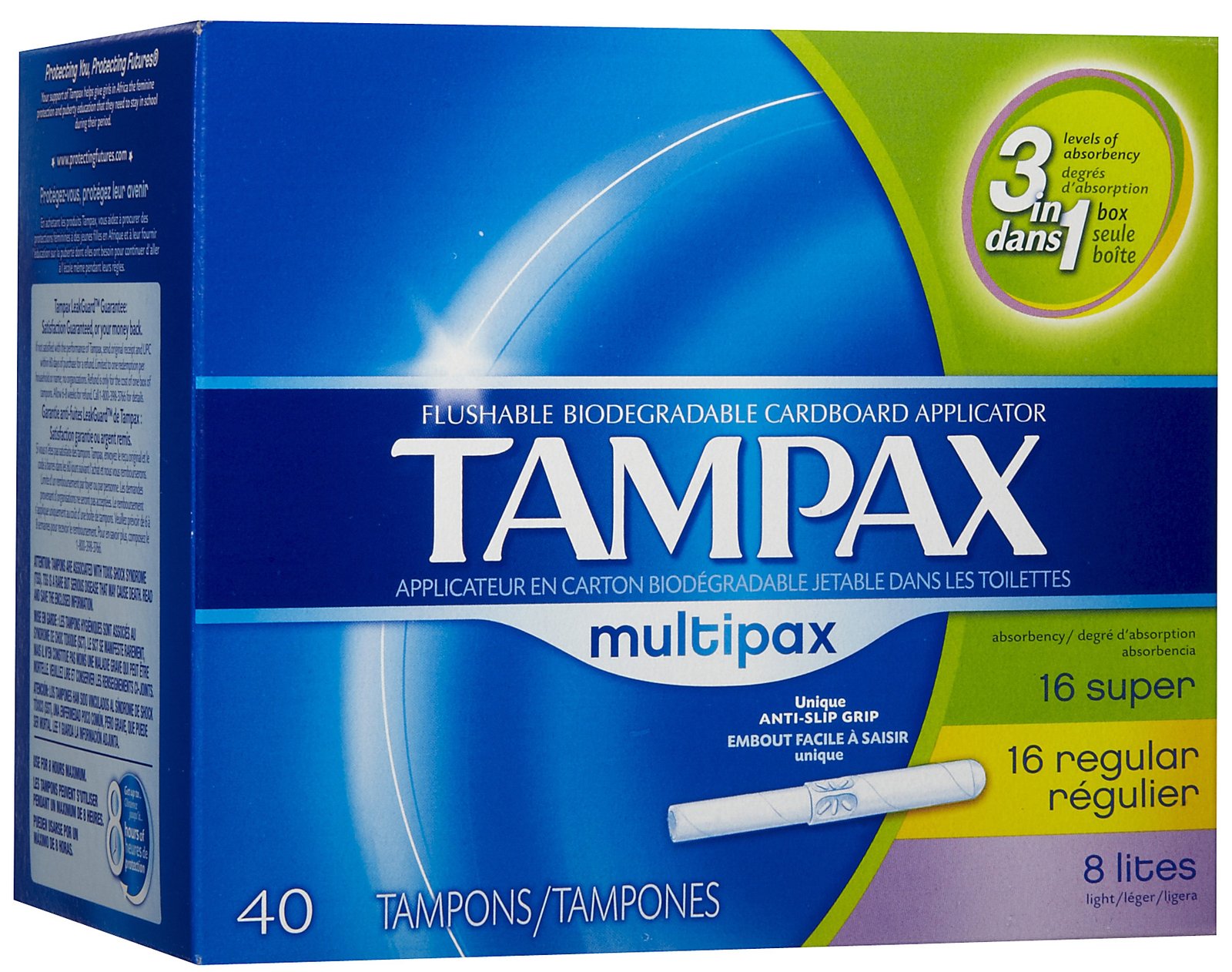 Source: diapers.com
Source: diapers.com
Using a menstrual cup lies several levels up on the difficulty scale from using a tampon, so if you've always been a pads-only girl, I would strongly recommend you try out tampons first before switching up to these.
A brief note on tampons: For a beginner, I would recommend Tampax, whose tampons come with applicators and a detailed, illustrated instruction sheet that make life much easier (and also, help you avoid putting your finger up there, ha). Please don't flush any of it down the toilet, though — even if they do say the applicators can be flushed. Throw all of it — used tampon, applicator and wrapper — into the trash.
Now I shall continue, on the assumption that you're comfortable with tampons, and are ready and game to step up to the menstrual cup challenge:
2. Menstrual cups should not cost you $50.
Right now, as far as I'm aware, you can only buy menstrual cups online — and I'll have more on why that's the case later.
But more importantly, don't be fooled by online stores that charge you that amount and say, "$50 is a small price to pay for the thousands of dollars you'll be saving over the coming decade that it'll last!"
Truth is, you can actually get it for half that price — or much less, if you're daring and venture onto AliExpress.
(Important clarification needed here though: buy cups from AliExpress at your own risk. Not all cups are made of medical-grade silicone, and you should always make sure they are before buying.)
There also happens to be this super-techie menstrual cup in development known as the LoonCup, which you can add yourself to a mailing list to buy once they've started shipping out supplies to their Kickstarter backers.
Let me show you what I mean — here are three local-based web stores I found from a preliminary Google search that stock popular international brands like Lunette and MoonCup:
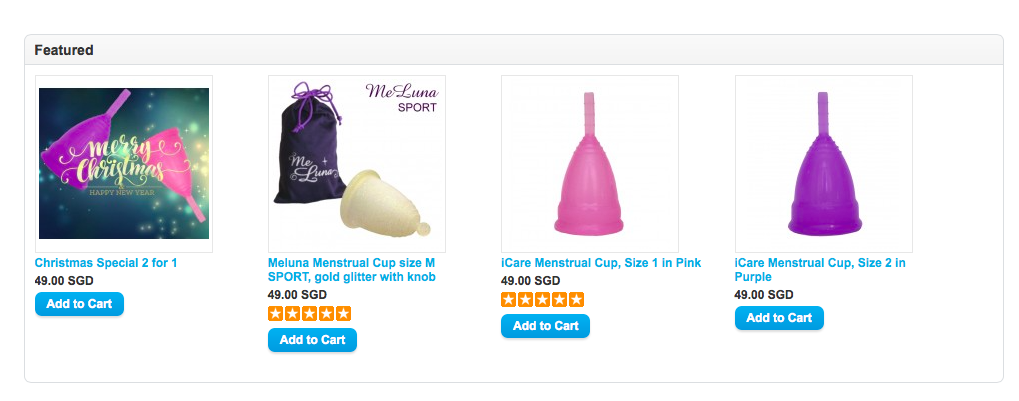 Screenshot from website
Screenshot from website
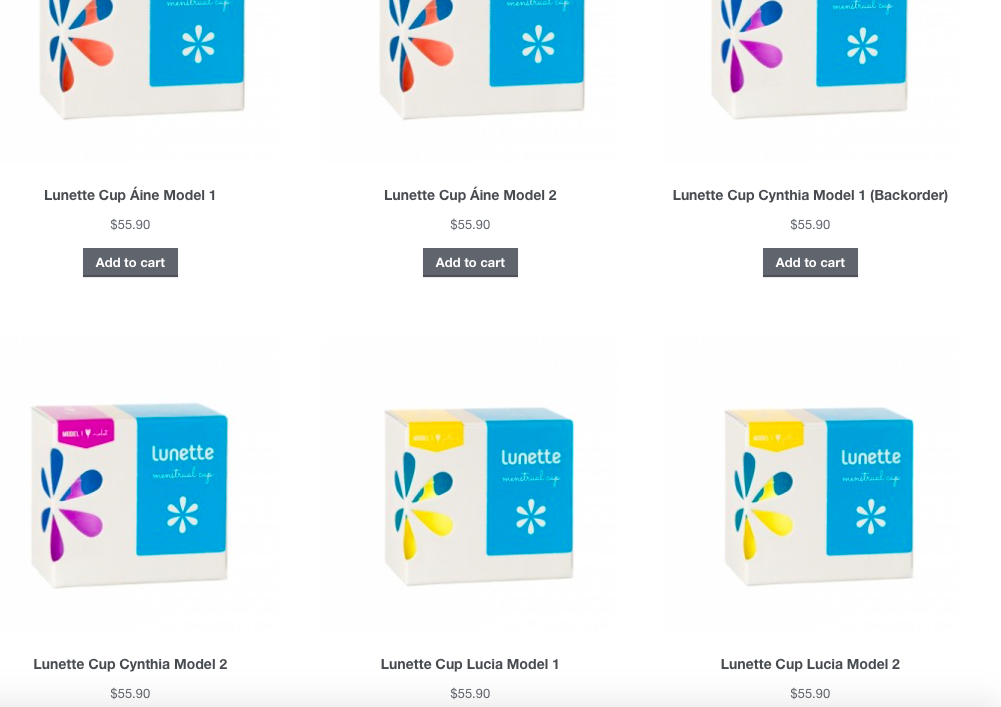 Screenshot from website
Screenshot from website
 Screenshot from website
Screenshot from website
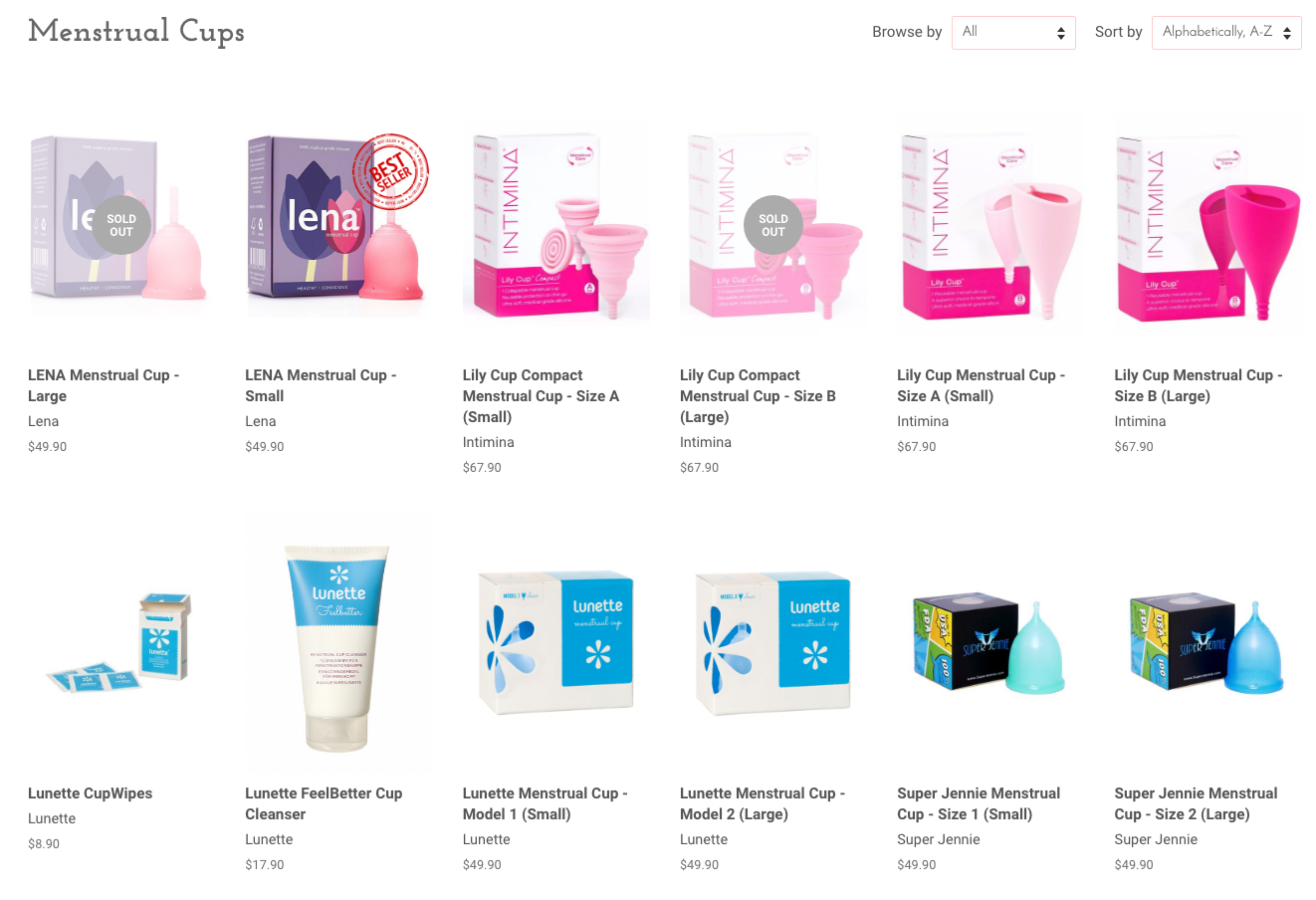 Screenshot from website
Screenshot from website
In the process of researching this, I discovered I had a Singaporean friend, Vanessa Paranjothy, who was doing something quite meaningful apart from selling menstrual cups.
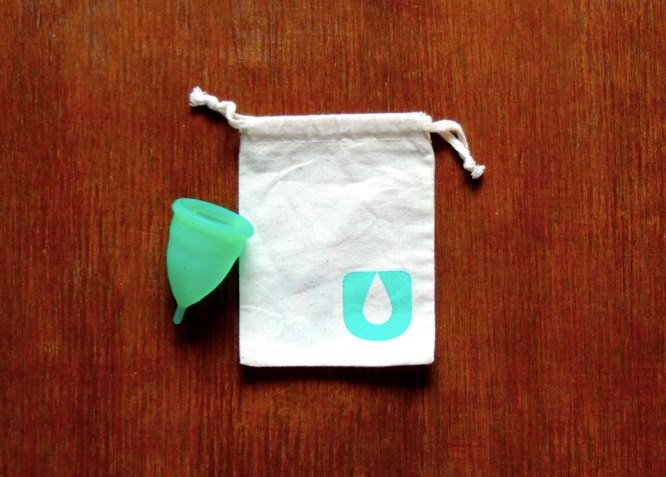 Photo from Freedom Cups Facebook page
Photo from Freedom Cups Facebook page
Her business, Freedom Cups, is a social enterprise that brings one cup to a girl in a developing country for the $25 that you pay for one.
(yes, she's my friend; no, I am not getting money for writing about her business — I simply think what she's doing is worth telling people about.)
There's a nifty video on her website that explains the whole idea pretty well, and worth the three minutes to watch.
Anyway, while learning more about her bid to tell people more about menstrual cups and bring more to girls and women in the third world (so far, she and her team has brought 300 cups to three villages in the Philippines, and distributed some to abused domestic workers and other beneficiaries of HOME), I learned the following from talking to her:
a) That you don't find menstrual cups in Guardian, Watson's or any other pharmacy because
- There's no demand for it (at the moment) and
- It makes more sense to sell things that women have to keep coming back for, as opposed to one thing that will last them for a decade.
b) That you don't hear much about menstrual cups online or in ads around Singapore because
- The Asian conservative mindset (you might be shocked but it does very much exist) firstly discourages open communication about menstruation, periods and everything else about them;
- Many Singaporean women don't even use tampons, because the idea of sticking something inside you isn't the most pleasant to contemplate at first. (Here's a news flash, by the way — using a tampon or a menstrual cup is not dirty, does not make you impure or cost you your virginity.)
c) That most online stores sell their cups for $50 because
Their aims are different, simply put. According to Vanessa, that's the market rate, and they're all profit-driven, being businesses.
"The product, however, is homogenous. Every company uses silicone for the cups, and what differs from one company from the next would be its marketing."
3. You can't necessarily walk around completely leak-free for the whole day while wearing a menstrual cup.
 Don't worry, it's whisky. We hope that cup hasn't been used before though... (Screenshot from video)
Don't worry, it's whisky. We hope that cup hasn't been used before though... (Screenshot from video)
Many reviews and articles you might read online proclaim that "you'll be surprised just how little blood you produce during your period" and "it only comes up to the third mark on the bottom few lines".
I'll be the first to tell you that isn't always the case, especially if you have very heavy flow on your first two or three days like I do.
During the first period I had when I started trying out a menstrual cup, I wore a backup pad (because I'm kiasu that way) and I had leaks onto it throughout my first and second day, despite emptying the cup out three times (on two of these occasions, the cup was full to the brim) on day two.
Plus — and I'm really getting blunt here — you really need to stick your fingers up your vagina and squeeze the base of the cup so you can release the "vacuum seal" it has obtained while inside, before being able to pull it out.
And good luck doing this when it's full; you can imagine the mess. Blood clots don't empty out all that easily either; I usually find myself washing them out in the sink. Thankfully, I've yet to spill any blood outside the toilet bowl, but I've definitely had to flush twice or even three times occasionally, and even scrub the base of the toilet bowl once.
HOWEVER — all that said, I'm super glad to use only one short pad throughout my entire day instead of four or five sans cup; two or three if we're talking about the 35cm-length ones. Also, it was my first period trying the cup — I expect to know better the lengths of intervals I should allow myself before emptying it in future.
4. There is a learning curve in mastering the use of a menstrual cup — but you will learn a lot in the process.
These include:
- How much blood you discharge during your period. I learned during mine that in the first two days, I probably discharge about 60ml of fluid (about 18ml — one full cup — on the first day, and 45 on the second), but the amount falls significantly afterward — by day three, I only have to empty the cup once in the morning and once during my evening shower (best time to empty the cup, by the way).
- How your vagina feels and works — many instructional guides show a cross-section of your lady parts to explain how to insert and remove menstrual cups, and in doing it yourself, you'll understand much better what people in the instructional videos on YouTube are saying and even what those diagrams show.
- That you have pelvic muscles, and how to use them (if you don't already know them). These come in handy especially when removing the cup — it'll help push it down so it's easier to pull out. There's apparently a trick where flexing your pelvic floor muscles while inserting the cup will help it go in further and lodge itself inside more securely, but I haven't tried it yet.
TL;DR: Should you try a menstrual cup? I'd say yes, if you're comfortable with tampons and are keen to be more environmentally-friendly (and also to save money). But if you haven't tried tampons before, I'd suggest you master and get comfortable with them first before taking the plunge to these.
Top photo from makeupandbeauty.com.
If you like what you read, follow us on Facebook and Twitter to get the latest updates.
If you like what you read, follow us on Facebook, Instagram, Twitter and Telegram to get the latest updates.
